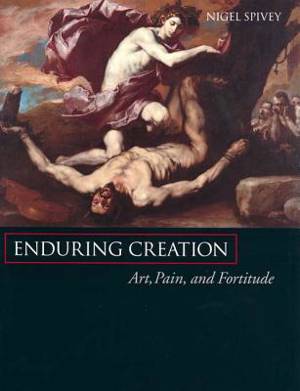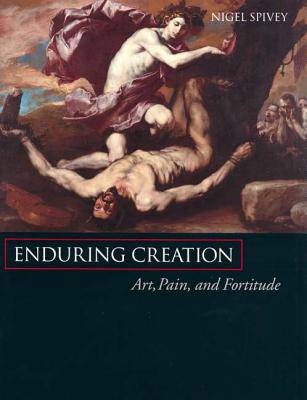
- Afhalen na 1 uur in een winkel met voorraad
- Gratis thuislevering in België vanaf € 30
- Ruim aanbod met 7 miljoen producten
- Afhalen na 1 uur in een winkel met voorraad
- Gratis thuislevering in België vanaf € 30
- Ruim aanbod met 7 miljoen producten
Zoeken
Omschrijving
Nigel Spivey takes on one of the greatest taboos in Western culture in this brilliantly original work of cultural history: why is so much pain depicted in the art of the West? Beginning with a meditation on Auschwitz, the prizewinning author then takes us on a journey that encompasses the stone-bound screams of classical sculpture, the many depictions of the Crucifixion, the Massacre of the Innocents and St. Sebastians pierced with arrows, self-portraits of the aging Rembrandt, and the tortured art of Vincent van Gogh. Exploring the tender, complex rapport between art and pain, Spivey guides us through the twentieth-century photographs of casualties of war, Edvard Munch's The Scream, and back to the recorded horrors of the Holocaust.
Beauty and disfigurement, violence and thrill, horror and comfort--these are pairings fostered throughout Western art, for causes as various as religious martyrdom, judicial torment, artistic virtuosity, and erotic gratification. The ancient Greeks invented tragic drama: but how far was pity for tragedy's victims tempered by the notion of just deserts? The first Christians preached Christ Crucified: why then did it take some five hundred years before images appeared of Christ on the cross? The Massacre of the Innocents was an event that never happened: for what reasons were artists of the Italian Renaissance so eager to show it convincingly?
Enduring Creation reveals the amazing power of art to console, to warn, to prepare the viewer for the harsher experiences of life, raising intriguing questions: Can pain be beautiful? Do we always pity suffering? Are sainthood and sadomasochism linked? This compelling study concludes with a positive message of hope for the enduring human spirit.
Beauty and disfigurement, violence and thrill, horror and comfort--these are pairings fostered throughout Western art, for causes as various as religious martyrdom, judicial torment, artistic virtuosity, and erotic gratification. The ancient Greeks invented tragic drama: but how far was pity for tragedy's victims tempered by the notion of just deserts? The first Christians preached Christ Crucified: why then did it take some five hundred years before images appeared of Christ on the cross? The Massacre of the Innocents was an event that never happened: for what reasons were artists of the Italian Renaissance so eager to show it convincingly?
Enduring Creation reveals the amazing power of art to console, to warn, to prepare the viewer for the harsher experiences of life, raising intriguing questions: Can pain be beautiful? Do we always pity suffering? Are sainthood and sadomasochism linked? This compelling study concludes with a positive message of hope for the enduring human spirit.
Specificaties
Betrokkenen
- Auteur(s):
- Uitgeverij:
Inhoud
- Aantal bladzijden:
- 272
- Taal:
- Engels
Eigenschappen
- Productcode (EAN):
- 9780520230224
- Verschijningsdatum:
- 1/06/2001
- Uitvoering:
- Hardcover
- Formaat:
- Genaaid
- Afmetingen:
- 200 mm x 270 mm
- Gewicht:
- 1202 g

Alleen bij Standaard Boekhandel
+ 162 punten op je klantenkaart van Standaard Boekhandel
Beoordelingen
We publiceren alleen reviews die voldoen aan de voorwaarden voor reviews. Bekijk onze voorwaarden voor reviews.











